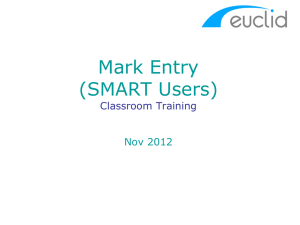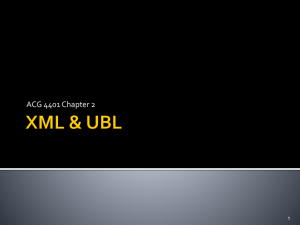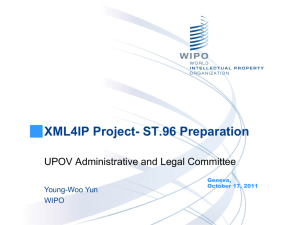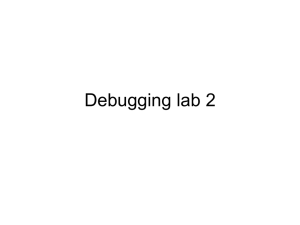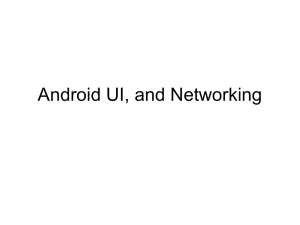XML with RDBMS
advertisement
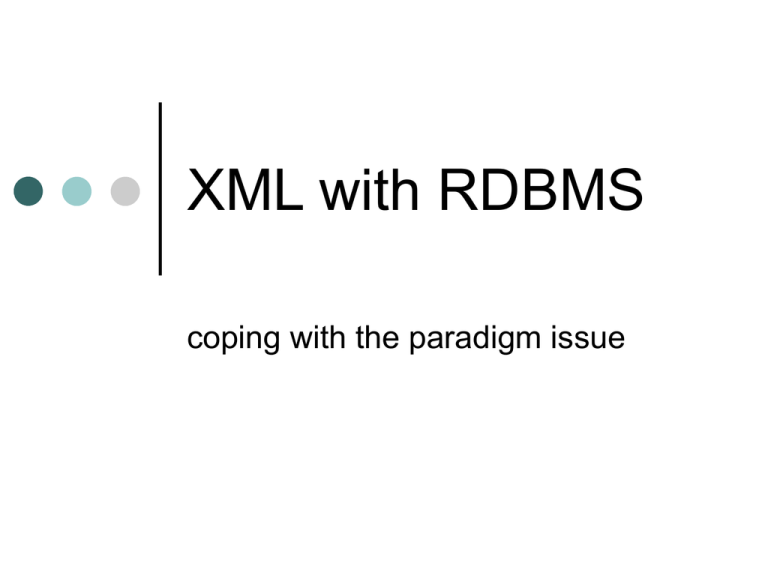
XML with RDBMS
coping with the paradigm issue
XML Storage options
Incoming XML can be treated in
different ways, depending on what
your application needs:
Store XML in OS File with a pointer
Bring the file,as is, into a table (CLOB)
Read the file, and programmatically
break it up and put into relational
storage
Store in a XMLDB repository
http://otn.oracle.com/tech/xml/xmldb/pdf/XMLDB_Technical_Whitepaper.pdf
Oracle XML DB White Paper
Tamino
"Storing XML documents in a true native XML
data store integrated in an XML server is
the key for to keeping pace with steadily
increasing business dynamics. And it is the
best way to respond to demands for
maximum performance and scalability, with
the lowest operational and administration
costs"
http://www1.softwareag.com/Corporate/products/tamino/prod_info/default.asp
"Here's why you too should choose XML technology"
Tamino architecture
http://www1.softwareag.com/Corporate/p
roducts/tamino/prod_info/architecture/def
ault.asp
The Oracle approach
Generic approach
http://www.research.att.com/~
sihem/shrex/shrexwidm2004.pdf
Doing XML in Oracle
XML_DB
Getting XML out from Oracle
Getting XML into Oracle
Procedural approach
SQLLDR
Oracle XML Developer's Kit 10g
XML_DB
Oracle XML DB is fully compliant with the
W3C XML data model
provides new standard access methods for
XML navigation and query.
Not a Separate Database Server
Technical white paper:
http://downloaduk.oracle.com/technology/tech/xml/xmldb/cu
rrent/twp.pdf
XML_DB features
XMLType
is a native datatype
extend CLOB datatype
used to store and manage XML documents
Columns
CREATE TABLE NewCDInfo (
DateTime_Recd Date DEFAULT SYSDATE,
SourceFileName Varchar2(60),
XMLContent XMLType) ;
or Tables
CREATE TABLE CDXML of XMLType;
XML_DB features
REGISTERING AN XML SCHEMA
XML Schema registered by calling the
PL/SQL procedure:
dbms_xmlschema.register_schema()
An XML Schema registration caused a
default table to be created for each element
in the XML Schema.
When an instance document is loaded in the
Oracle XML_DB repository, the content of
the document will be stored in the default
table.
NOTE: tables created by this process are
XMLType tables:
• Object tables where each row is represented as
an instance of the XMLType datatype
XML_DB benefits
The ability to store and manage both structured and
unstructured data under the same standard W3C XML
data model (XML Schema).
Complete transparency and interchangeability between
the XML and SQL data views.
FTP, and WebDAV protocol support.
Store XML in the database and render it queryable and at
the same time access it through popular desktop tools.
Claimed by XML_DB manual:
• (http://oracledocs.shu.ac.uk/oracle/10.1/G
enericV1/appdev.101/b10790/xdb01int.ht
m#i1047230)
XML_DB uses include:
Business-to-Business (B2B) and Application-to-Application (A2A)
integration
Content-management applications
Web Services
A typical Oracle XML DB application has one or more of the following
requirements and characteristics:
Large numbers of XML documents must be ingested or generated
Large XML documents need to be processed or generated
High performance searching, both within a document and across a
large collections of documents
High Levels of security. Fine grained control of security
Uses languages such as Java that support open standards such as
SQL, XML, XPath, and XSLT
Accesses information using standard Internet protocols such as FTP,
HTTP/WebDAV, or JDBC
Full queriability from SQL and integration with analytic capabilities
Validation of XML documents is critical
http://oracledocs.shu.ac.uk/oracle/10.1/GenericV1/appdev.101/b10790/xdb02rep.htm#i1034512
XML_DB systems design
factors:
Data
Access
How do applications get to the data?
security
Application Language
Structured?
Schema based?
What are your organisations skillsets?
Performance issues
http://oracledocs.shu.ac.uk/oracle/10.1/GenericV1/appdev.101/b10790/xdb02rep.htm#i1034512
Getting XML Out using XML
SQL Utility (XSU).
XSU Java Servlet released Oracle8i
In Oracle9i+ improved functionality
and PL/SQL APIs
Two key packages:
DBMS_XMLQuery
• getXML
• getDTD
DBMS_XMLSave
Getting XML Out using XML
SQL Utility (XSU).
The basic stages of the procedure are:
Assign the Select that generates the data we
want to the context called Qry
Use the DBMS_XMLQuery procedure called
getXML to return the result set, and put the
resultant CLOB into the pre-defined variable
Members_xml.
Contexts need to be closed
Return the generated CLOB as a result
From Table to XML
CREATE OR REPLACE FUNCTION membernames2xml
RETURN CLOB IS
members_xml CLOB;
Qry DBMS_XMLQuery.ctxType;
BEGIN
Qry := DBMS_XMLQuery.newContext('SELECT * FROM
member');
Members_xml := DBMS_XMLQuery.getXML(Qry);
DBMS_XMLQuery.closeContext(Qry);
RETURN members_xml ;
END;
/
Outputing XML with XML_DB
SQL extentions
set pagesize 0
set long 10000
select '<?xml version="1.0"?>' from dual ;
select '<ROWSET>' from dual ;
SELECT
xmlelement("CD",
xmlforest(a.composer, b.title, b.cdid))
FROM composers a, cds b
where a.composerid=b.composerid
and a.composerid < 10 ;
select '</ROWSET>' from dual ;
IVY
To carry out the server-side procedures in the
tutorial you need to have access to a folder
that the Oracle Server can access
Log in to Ivy using Telnet and run:
/usr/local/bin/oracle_dir
This process creates a Database Directory
Object which maps to the user's home
directory on ivy and the F: drive:
/homedir/oracle_work
The Directory object has the following name:
USERNAME_ORACLE_WORK
For example: CMSPL4_ORACLE_WORK
Inserting to a table from
XML
We can insert XML directly into a table of type XMLType:
drop table CDXML ;
CREATE TABLE CDXML of XMLType;
Declare
this_clob CLOB ;
Begin
this_clob:=getclobfromfile('CMSPL4_ORACLE_WORK','Ne
wCD1471.xml');
INSERT INTO CDXML
VALUES ( xmltype ( this_clob
END ;
/
•
•
set long 1000
select * from CDXML ;
)
);
Inserting to a table from
XML
There are more steps involved than there
were for generating XML from SQL. We
need to:
read the XML file from the OS or URL
PARSE it (make some sense of it)
Put it in a memory structure that we can
manipulate it (a DOM document).
Decide how we will handle the mapping to
fields
And then insert the data
See example in tutorial


